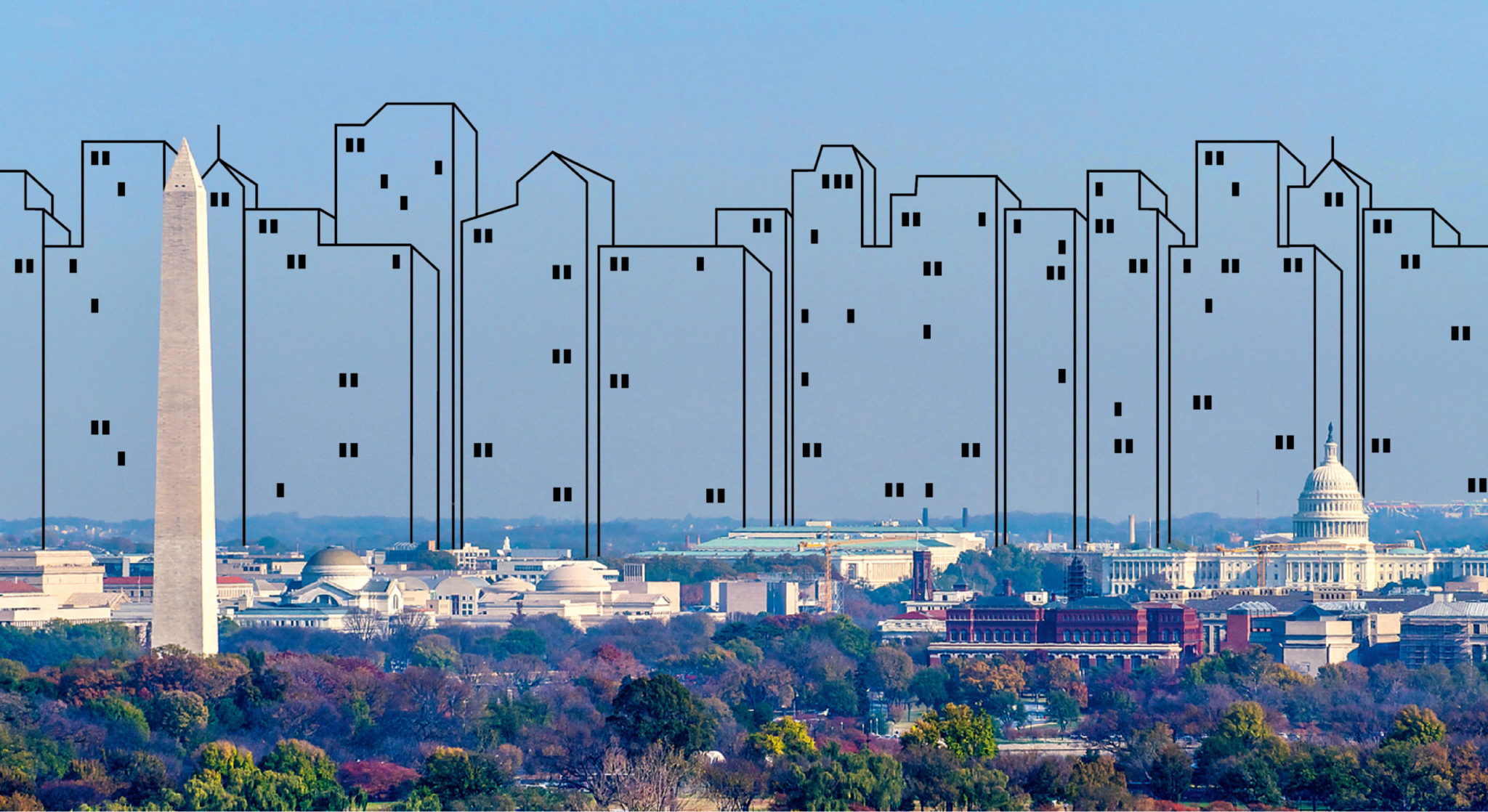At her second inaugural address in January, DC mayor Muriel Bowser raised the possibility of changing the century-old law that restricts the height of buildings in the District. Could it finally be time to seriously consider it? Fans of the rule say it has played a central role in maintaining the city’s charm. Opponents, meanwhile, think it limits the amount of badly needed housing that developers can build on any given site. Here’s a closer look at their arguments.
Go Low
Supporters say the Height Act has a lot to do with our city’s unique look. Without it, “you end up with private corporations building skyscrapers that would be visually competing with things like the Washington Monument or the Capitol or National Cathedral,” says Deane Madsen, who runs the local-architecture Instagram site Brutalist DC. “There are plenty of DC landmarks that are visible by design. An important part of feeling like I’m connected to the city is knowing where I am within it.”
Plus, they say, it’s not clear that allowing towers would make a huge difference in reducing housing prices—the reason some advocates want to get rid of the Height Act. “Suddenly being able to build larger buildings doesn’t necessarily mean you’re going to be getting a lot of affordable apartments,” says Martin Moeller, head curator of the National Building Museum and editor of the American Institute of Architects’ ArchitectureDC magazine. “New York City and London have tremendous affordability problems, and there are plenty of skyscrapers being built there.”
Raise the Roof
Anti–Height Act types disagree: Washington isn’t Manhattan, and an increased supply of apartments would surely exert some downward pressure on prices. What if restrictions were lifted just in areas far from the monuments? “Maybe there’s a future in which we’re like a Blade Runner city—you can always be afraid of the worst example of anything,” says Andrew Trueblood, whom Bowser recently nominated as director of DC’s Office of Planning and who wrote his 2009 MIT master’s thesis about the benefits of raising height limits in parts of the District. “But the voices I hear that are interested in looking at the height limit are looking to solve a problem. The idea would be that if we create something, we would definitely get a public benefit.”
What’s Next?
There’s an even bigger issue than winning over locals: convincing Congress. The Height Act is a federal law, after all. And that’s part of what bothers opponents. “There’s no other city or state in the country that the federal government limits what they can build,” says Trueblood. “Why would our city be treated differently?”
This article appears in the April 2019 issue of Washingtonian.


















